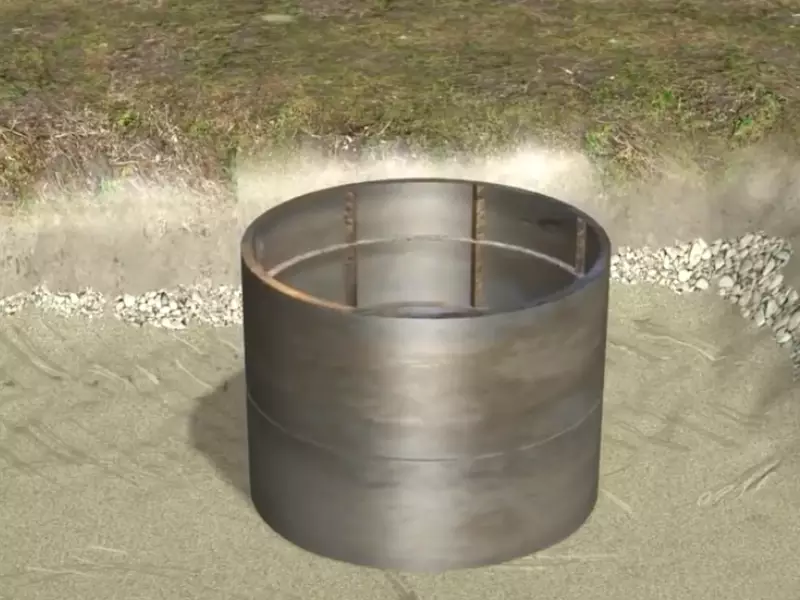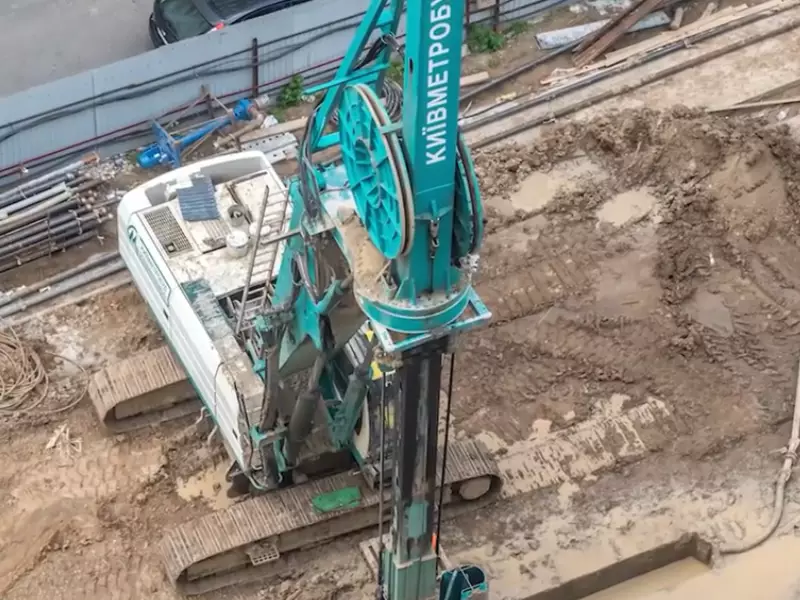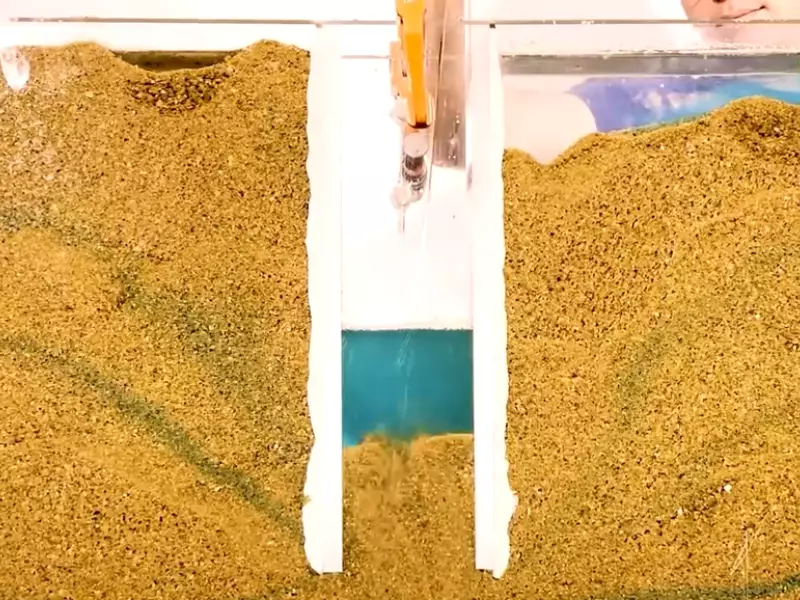Groundwater plays a pivotal role in sustaining life on earth, particularly in areas devoid of perennial surface water sources. One of the fascinating aspects of groundwater is the water table, a dynamic component that fluctuates based on various factors.
The water table essentially defines the boundary between unsaturated and saturated zones underground. When we pump water from a well, this table doesn’t remain static; it changes, forming a distinct pattern known as the “cone of depression.”
The science behind these changes is crucial for everyone, from environmentalists to farmers, as it governs water availability, quality, and even impacts the land above.
Water Table Basics
Definition and Characteristics
The water table is the uppermost layer where underground spaces, between rocks and soil particles, are fully saturated with water. This layer isn’t stagnant; it responds to factors both natural and man-made.

Natural Influences on Its Levels
Several natural factors affect water table levels:
Seasonal Variations: The water table reacts dynamically to seasonal weather patterns:
- Rainfall: Regular and abundant rain contributes directly to the recharge of the water table. As rainwater infiltrates the soil, it trickles down and fills the spaces in the soil, gravel, and rock, raising the level of the water table.
- Drought Conditions: Extended periods without significant rainfall can lead to a decline in the water table. Prolonged droughts can cause a significant dip, leading to water scarcity in affected regions.
Geological Formations: The type of rock and soil beneath the surface plays a decisive role:
- Impermeable Rocks: Regions dominated by rocks like granite or clay might have high water tables. Since these rocks don’t let water seep through easily, the water accumulates above them.
- Permeable Rocks: On the contrary, rocks like sandstone or limestone allow water to percolate easily. As a result, the water table might be deeper in areas with these rock types as water travels further down.
Proximity to Water Bodies
Being close to substantial bodies of water has its influence:
- Rivers and Streams: These flowing bodies often provide a steady source of recharge to the surrounding groundwater. In some cases, the groundwater might also feed the river, especially during dry spells.
- Lakes and Ponds: These static bodies can be both a source and sink. While they recharge groundwater when full, during dry seasons, groundwater might feed these water bodies.
- Oceans and Seas: Coastal areas have a delicate balance between freshwater and saltwater. Over-pumping can cause saltwater intrusion, where seawater replaces freshwater in the aquifer, leading to water quality issues.
Pumping Wells: A Brief Overview
The quest for freshwater often leads humanity deep into the earth. Wells, both ancient and modern, tap into the secrets of the underground.
Definition and Purpose
Wells, simply put, are man’s bridge to the underground reserves of freshwater. These structures:
- Quench Thirst: The primary purpose of wells in many regions is to provide potable water.
- Support Agriculture: In agrarian societies, wells offer the much-needed water for crops.
- Industrial Uses: Many industries require vast amounts of water, sourced from deep wells.
Types of Wells: Shallow vs. Deep
Depth determines a well’s character and its impact on the water table:
- Shallow Wells: Often dug by hand or with minimal machinery, these wells tap into the upper groundwater reserves. They are sensitive to immediate changes in the water table and can run dry during extended dry spells.
Benefits: Easier and cheaper to construct.
Drawbacks: More susceptible to contamination and seasonal variations. - Deep Wells: Modern, mechanized wells can reach profound depths, often piercing multiple aquifers. Their reach ensures a steady water supply but can also strain deep groundwater reserves.
Benefits: Consistent water supply and less prone to contamination.
Drawbacks: Can lead to significant water table drops and might tap into non-renewable aquifers.
Impact of Pumping on Water Table
Drawing water from a well is akin to sipping through a straw from a glass; you see changes both at the source and around it.
Cone of Depression Formation
This isn’t about a sad cone; it’s a phenomenon every well owner should be aware of:
- Formation: As water is pumped out, the immediate region around the well experiences a sharp decline, forming a cone-shaped depression.
- Expansion and Deepening: The more water you extract, and the faster you do it, the larger and deeper this depression becomes.
- Recovery: If pumping is paused or reduced, the cone can recover, albeit at a rate dependent on several factors like the aquifer’s recharge rate and its permeability.

Rate of Water Table Drop
Not all wells cause the same degree of disturbance:
- Pumping Intensity: A well serving a large city, pumping millions of liters daily, will have a more pronounced effect compared to a small well serving a single household.
- Aquifer Characteristics: Some aquifers can sustain heavy pumping without showing a significant drop. Others might show a dramatic decline with even moderate extraction.
Regional vs Local Impacts
Drawing water affects both the immediate vicinity and areas far from the well:
- Local Effects: The region around the well experiences the most direct changes, with the water table showing a clear drop.
- Ripple Effects: Further from the well, the effects might be more subtle but still significant. Over time, these can accumulate, leading to regional water table changes and potential conflicts over water rights and resources.
Factors Affecting the Extent of Change
The change in the water table around a pumping well isn’t arbitrary; it’s governed by a multitude of factors.
Pumping Rate and Volume
The sheer force with which water is pulled out, along with the total volume extracted, dictates the magnitude of the change:
- Heavy Pumping: Rapid extraction rates can cause swift and significant water table drops, especially in areas with limited recharge.
- Cumulative Effects: Over time, even moderate pumping can cause significant changes if the total volume extracted surpasses the natural recharge rate.
Aquifer Properties
Different aquifers react differently:
- Porosity and Permeability: Aquifers with high porosity and permeability can support higher pumping rates without showing drastic changes.
- Aquifer Material: Sand and gravel aquifers may exhibit different reactions compared to limestone or bedrock aquifers.
Recharge Rate of the Aquifer
How quickly an aquifer refills is pivotal:
- Fast Recharge: Aquifers with swift recharge rates, often due to ample rainfall or proximity to water bodies, can handle more pumping.
- Limited Recharge: In contrast, aquifers with slower recharge rates are more vulnerable to over-pumping.
Consequences of Over-Pumping
Tapping too enthusiastically into the earth’s liquid treasure can lead to significant complications:
Land Subsidence
When the water table drops severely:
- Compression: The layers above the aquifer compress, leading to a decline in the ground level.
- Permanent Change: In many cases, even if water returns, the land might not regain its original level, leading to permanent subsidence.
Lowered Water Quality
Over-pumping can degrade the very essence we seek:
- Saltwater Intrusion: Especially in coastal areas, heavy pumping can pull seawater into freshwater aquifers.
- Increased Concentration: With less water, contaminants and minerals can concentrate, deteriorating water quality.
Economic Impacts
Water scarcity hits the wallet:
- Increased Costs: Digging deeper wells and treating lower quality water increases expenses.
- Agricultural Losses: Crop yields can plummet with inadequate water, affecting local economies and food supplies.
Sustainable Pumping Practices
Guarding our subterranean reservoirs is a shared responsibility:
Monitoring Well Usage
Knowledge is power:
- Usage Meters: Implementing metering solutions gives real-time data on extraction rates.
- Trend Analysis: Monitoring usage trends can help predict potential issues and manage extraction more efficiently.

Smart Irrigation and Consumption
Water wisdom:
- Drip Irrigation: This technique reduces water wastage by directly providing water to plant roots.
- Water-Saving Appliances: Encourage the use of appliances that minimize water consumption in homes and industries.
Aquifer Recharge Initiatives
Actively bolstering the underground reservoirs:
- Rainwater Harvesting: Directing rainwater into the ground can help accelerate the natural recharge process.
- Artificial Recharge: Techniques like spreading basins and injection wells can be used to introduce water back into aquifers.
How Natural Factors Play a Role
Beyond human actions, the natural environment plays a role:
Rainfall and Its Impact
- Direct Recharge: Heavier rains can swiftly refill aquifers.
- Variable Impact: In regions with heavy runoff or impermeable surfaces, even significant rainfall might not lead to much recharge.
Soil Types and Percolation
- Sandy Soils: These allow water to seep in quickly, aiding in recharge.
- Clayey Soils: They might retard the percolation process, delaying the refill of aquifers.
Nearby Water Bodies’ Influence
- Rivers: They can both feed and draw from groundwater.
- Lakes: Depending on their level, they can recharge aquifers or get replenished by them.
Case Studies
Real-world scenarios shed light on theory:
Areas with Notable Water Table Shifts
- Central Valley, California: Over-pumping for agriculture has led to significant subsidence and water table drops.
- Chennai, India: Rapid urbanization and over-extraction led to dire water shortages in 2019.
Success Stories: Sustainable Management
- San Antonio, Texas: Effective management practices and public education campaigns have stabilized water table levels.
- Israel: Advanced desalination, water recycling, and smart irrigation have revolutionized water management.
Tips for Well Owners
Ownership comes with responsibility:
Regular Monitoring
- Water Level Checks: Regularly measure the water table to ensure it remains sustainable.
- Water Quality Tests: Periodic tests can highlight any contamination or saltwater intrusion early.
Adhering to Regulations
- Local Guidelines: Most regions have regulations governing well usage. Adhering to them ensures both sustainability and legal compliance.
Collaboration with Neighbors
- Shared Resources: Remember that aquifers span beyond property lines. Collaborative efforts with neighboring well owners can be more effective than isolated actions.
Frequently Asked Questions
What is the ‘cone of depression’?
It’s a cone-shaped dip in the water table that forms around a pumping well. The more water pumped, the deeper and wider this cone becomes.
How can we prevent over-pumping?
Regular monitoring, adhering to regulations, and using water-saving techniques can curb over-pumping.
Is the water table drop reversible?
It depends on various factors like aquifer properties and recharge rate. In some cases, with reduced pumping and enhanced recharge efforts, levels can recover.
Conclusion
The dynamic nature of the water table makes it a subject of great importance, especially in today’s world facing water scarcity issues. The balance between our needs and nature’s capacity to replenish is critical.
Adjusting our water extraction practices and placing sustainability at the forefront ensures that groundwater remains a reliable resource for generations to come. Groundwater sustainability is not just about science but also about responsible stewardship of a precious resource.